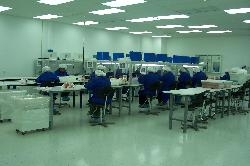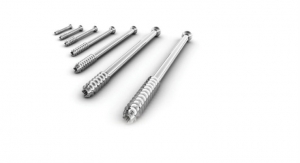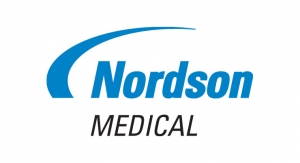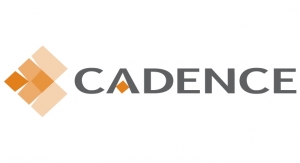Joe McBeth, Vice President, Global Supply Chain, Jabil12.16.20
What COVID-19 has shown us is that too many companies are not fully prepared for the supply chain disruptions they are experiencing. In fact, only ~10 percent of the companies Jabil recently surveyed across seven industries thought their predictive supply chain management approach had performed well during the current pandemic.
Over the last nine months, Jabil has been actively engaged with customers across multiple industries, working hand-in-hand, responding to supply chain disruptions. It has been incredible to watch innovative supply chain solutions emerge as industries adopt short-term solutions to challenges caused by COVID.
Industries, however, need to adopt long-term, permanent solutions to challenges that arose due to COVID. Groundbreaking innovations addressing supply chain resiliency and product supply chain lifecycle management are needed to ensure future success via pivoting in the face of a future unexpected event.
In the short term, the current crisis created an immediate need to address active supply chain disruptions. Across seven industries and the 715 supply chain decision-makers Jabil surveyed, almost all are suffering supply chain disruptions and negative financial impacts. The hardest hit are the retail and healthcare sectors. Healthcare, in particular, had the highest percentage of respondents that said their companies have experienced negative financial impact greater than $500 million from March to August of this year.
Component Obsolescence and Shortages
At center stage for many companies in healthcare is what they didn’t have: a robust predictive supply chain management program implemented and actively addressing disruption. It’s worth noting, though, that not all products have been equally affected. In fact, we are finding that it’s not necessarily the products with thousands of parts from hundreds of suppliers that are affected. Instead, it’s primarily the products with outdated component technologies and component obsolescence driving many of these disruptions.
A case in point: Jabil is working with an existing customer produce a line of emergency use products that saw its demand increase from 1,000 to 50,000 units projected for 2020, a 50-fold increase. Many of these models have market maturity ranging anywhere from six to 30 years. The challenges we faced were numerous. First, we had more than 120 component engineering related issues, which included more than 50 parts that were end-of-life (EOL) or last time buy inventory (LTB). To complicate matters, we had over 300 critical component shortages that we had to manage as well. Second, with component constraints and urgent needs, we created new production planning models designed for scenario planning, in addition to restructuring our internal processes to respond rapidly to the demand.
Component obsolescence and shortages are challenging problems under normal conditions but in the current COVID environment, they’re amplified that much more. In order to find substitutes for the 50-plus obsolete components, we leveraged internal supply chains for the regulated industries we serve (automotive, aerospace & defense). We were able to find part substitutions by setting up a virtual clearinghouse so the suppliers could work collaboratively with us, together with the customer, to find solutions.
We found it to be a highly effective engagement strategy. And we’re going to continue to leverage the strategy going forward. Of the 300-plus critical component shortages, we were able to increase output within a matter of weeks, but as these parts are not in high demand, even if they are not technically obsolete there still is no inventory in the pipeline. The result is short-term upsides are followed with gaps for the supply chains to “get caught up.” It is far easier to accelerate a leading supply chain than to restart a lagging or obsolete one. The latter is becoming a significant problem in the healthcare industry due to the rapid increase in technology.
Given the impact of component constraints, one of the other challenges faced by all supply chain management now is how to utilize these constrained resources most effectively. As with many product families, there are common parts shared across the models. The capability to maximize output requires the ability to manage a very complex planning scenario and have both a toolset and skillset that allows answers and options to be reviewed with speed. The goal is to be able to get more product in the field quickly, yet still recognizing the impacts that goal brings across the product family. With the example I shared, the scenarios were so complex that we ended up expanding our role with the customer. We quickly added more predictive planning capability. We realized that there were thousands of components, multiple options and multiple ship-to locations. This adjustment is tough enough in normal times, but add in the complications of having supply chains shut down unpredictably due to government lockdowns while simultaneously navigating COVID impacts at the factory level, and you have a tremendously difficult situation.
Internal Control Measures
In order to respond rapidly to address these issues, we also had to restructure our internal control measures to accelerate our ability to secure components in high demand before other products used them up. This created a need for both an emergency approvals process and a capability to use 24 hours of the clock, regardless of buying location. As of September, we were still working to fulfill the requested volumes, but by addressing the component constraints and production planning optimization, we have enhanced our already solid footing to de-risk fulfilling the demand curve moving and increased our ability to shorten the supply chains.
Long-life products with embedded older technologies and obsolete components are one of the biggest threats to the future of healthcare supply chain resiliency. But it is more than just obsolete components. Within healthcare, Internet of Medical Things (IoMT) technology will move faster than the pace of change with therapy. Your ability to remain a leader in your domain requires the vision and ability to accommodate these two very different rates of change: technology and therapy.
Just because you can buy a part doesn’t mean you can sell a product. If your device is a connected device but has fallen a generation behind in connectivity technology, your product will suffer, lose competitiveness and demand will drop. You have to prepare and plan for the lifecycle of your products’ technology and this is likely changing much more dynamically than any other iteration within your product.
Notwithstanding, healthcare and other regulated industries are still challenged with single-sourced components and understandably conservative approaches to product and component changes. In combination, the infrastructure for standard electronics is not likely to morph dramatically. For these reasons, we don’t believe there will be a massive reshuffling of the healthcare supply base because of COVID. Supplier relationships are critically important and can take years to build and train. The complexity in electronics and the cost to re-shore would be astronomical, increasing healthcare manufacturing costs dramatically. The cost to rebuild a semiconductor fab is in the billions of dollars. One industry surely will not be able to bare that cost burden alone.
Regionalizing Supply Chains
There is significant discussion about regionalizing the supply chains and for certain this will happen, but it will not be what people think.
Component suppliers of standard components will not likely change much of their footprint. But there are answers creating more security than what exists today. The balance sheet has been, and will likely continue to be, the solution for creating some level of “regional available inventory.” Multiple approved sources will continue to be an obvious simple answer as this is usually not very time consuming or expensive to do. With that said, approval of multiple suppliers is only part of the answer. If the supply chains become constrained, if you are not already buying from the supply base, you may end up still waiting as the whole world will be pursuing the supply base that is not constrained. Having orders on the books is a very powerful way to help guarantee priority setting.
Regionalizing “custom” mechanical components might be a solution with more logic to it, but it’s no less expensive. Metal fabrication, metal machining and injection molding are services available in every geography at multiple price points and consistent with commodity economics. The issues are both the cost of dual sourcing across geographies with very different price points and the cost of tooling. This suggests that you could use either the balance sheet solution (as referenced earlier) or actually attack the problem by using the P&L, or a combination of both.
The most obvious solution is one that has been in play prior to COVID: regionalizing the assembly and manufacturing of the product within the consuming region while also having some form of supply flexibility statistically sized (based on the amount of time it will take to repair the node). The right way to look at risk is to be agnostic. The precise type of risk doesn’t matter—what matters is the vigilance for understanding the architecture of a supply chain and the intimate technical details of how components are made and the details of who uses and how those supply chains perform.
Global supply chains are here to stay. It can take years to develop a supply base, at great expense, but it can’t be easily undone. Therefore, investing in the supply base and in risk management tools like predictive supply chain lifecycle management is the best path forward in the post-COVID world.
Focus of Customers
What actions are customers taking right now to address COVID-related supply constraints? From a short-term perspective, process and logistics optimization are key. In dealing with a pandemic response, our survey found that nearly all companies (98 percent) have made changes. Nearly half optimized their processes to streamline response times to process recovery or increased incident management coordination. Another 47 percent, nearly half, deployed new technology in areas including supply chain visibility, risk management and additive manufacturing.
Logistics
One of the unique challenges of the pandemic is related to global logistics. Between lockdowns, border closures and travel restrictions, many supply chains were in a complete standstill. As a result, 44 percent of our survey participants had to quickly identify new options for international shipping. Others pursued a combination of different changes to alleviate their logistics issues.
The pandemic continues to drive higher rates due to capacity constraints across all regions. Greater visibility, transportation management optimization and planning can help reduce costs while providing predictability in delivering materials and products to their desired destination.
Looking Forward: Agility, Resiliency, Predictability and Speed
Over the next two years, OEMs will be laser-focused on their ability to respond rapidly to disruptions and reduce their risk. In addition, they will be working on their ability to predict shifts in the supply chain to appropriately (and proactively) respond to it. Where we see the most need for predictive supply chain management tools are to help plan for component obsolescence and switching out older technologies.
The real solution requires a change in the definition of partner. Redefining who is best positioned to lead efforts related to technology, supply chain networks and therapy. Therapy is pretty clear but there is a lot more debate on how EMS can add more value in product development, technology roadmaps, lifecycle management and managing complex supply chain. The biggest risk going forward is simply not changing anything. Good partners shouldn’t allow that as a recommended path forward.
Over the last nine months, Jabil has been actively engaged with customers across multiple industries, working hand-in-hand, responding to supply chain disruptions. It has been incredible to watch innovative supply chain solutions emerge as industries adopt short-term solutions to challenges caused by COVID.
Industries, however, need to adopt long-term, permanent solutions to challenges that arose due to COVID. Groundbreaking innovations addressing supply chain resiliency and product supply chain lifecycle management are needed to ensure future success via pivoting in the face of a future unexpected event.
In the short term, the current crisis created an immediate need to address active supply chain disruptions. Across seven industries and the 715 supply chain decision-makers Jabil surveyed, almost all are suffering supply chain disruptions and negative financial impacts. The hardest hit are the retail and healthcare sectors. Healthcare, in particular, had the highest percentage of respondents that said their companies have experienced negative financial impact greater than $500 million from March to August of this year.
Component Obsolescence and Shortages
At center stage for many companies in healthcare is what they didn’t have: a robust predictive supply chain management program implemented and actively addressing disruption. It’s worth noting, though, that not all products have been equally affected. In fact, we are finding that it’s not necessarily the products with thousands of parts from hundreds of suppliers that are affected. Instead, it’s primarily the products with outdated component technologies and component obsolescence driving many of these disruptions.
A case in point: Jabil is working with an existing customer produce a line of emergency use products that saw its demand increase from 1,000 to 50,000 units projected for 2020, a 50-fold increase. Many of these models have market maturity ranging anywhere from six to 30 years. The challenges we faced were numerous. First, we had more than 120 component engineering related issues, which included more than 50 parts that were end-of-life (EOL) or last time buy inventory (LTB). To complicate matters, we had over 300 critical component shortages that we had to manage as well. Second, with component constraints and urgent needs, we created new production planning models designed for scenario planning, in addition to restructuring our internal processes to respond rapidly to the demand.
Component obsolescence and shortages are challenging problems under normal conditions but in the current COVID environment, they’re amplified that much more. In order to find substitutes for the 50-plus obsolete components, we leveraged internal supply chains for the regulated industries we serve (automotive, aerospace & defense). We were able to find part substitutions by setting up a virtual clearinghouse so the suppliers could work collaboratively with us, together with the customer, to find solutions.
We found it to be a highly effective engagement strategy. And we’re going to continue to leverage the strategy going forward. Of the 300-plus critical component shortages, we were able to increase output within a matter of weeks, but as these parts are not in high demand, even if they are not technically obsolete there still is no inventory in the pipeline. The result is short-term upsides are followed with gaps for the supply chains to “get caught up.” It is far easier to accelerate a leading supply chain than to restart a lagging or obsolete one. The latter is becoming a significant problem in the healthcare industry due to the rapid increase in technology.
Given the impact of component constraints, one of the other challenges faced by all supply chain management now is how to utilize these constrained resources most effectively. As with many product families, there are common parts shared across the models. The capability to maximize output requires the ability to manage a very complex planning scenario and have both a toolset and skillset that allows answers and options to be reviewed with speed. The goal is to be able to get more product in the field quickly, yet still recognizing the impacts that goal brings across the product family. With the example I shared, the scenarios were so complex that we ended up expanding our role with the customer. We quickly added more predictive planning capability. We realized that there were thousands of components, multiple options and multiple ship-to locations. This adjustment is tough enough in normal times, but add in the complications of having supply chains shut down unpredictably due to government lockdowns while simultaneously navigating COVID impacts at the factory level, and you have a tremendously difficult situation.
Internal Control Measures
In order to respond rapidly to address these issues, we also had to restructure our internal control measures to accelerate our ability to secure components in high demand before other products used them up. This created a need for both an emergency approvals process and a capability to use 24 hours of the clock, regardless of buying location. As of September, we were still working to fulfill the requested volumes, but by addressing the component constraints and production planning optimization, we have enhanced our already solid footing to de-risk fulfilling the demand curve moving and increased our ability to shorten the supply chains.
Long-life products with embedded older technologies and obsolete components are one of the biggest threats to the future of healthcare supply chain resiliency. But it is more than just obsolete components. Within healthcare, Internet of Medical Things (IoMT) technology will move faster than the pace of change with therapy. Your ability to remain a leader in your domain requires the vision and ability to accommodate these two very different rates of change: technology and therapy.
Just because you can buy a part doesn’t mean you can sell a product. If your device is a connected device but has fallen a generation behind in connectivity technology, your product will suffer, lose competitiveness and demand will drop. You have to prepare and plan for the lifecycle of your products’ technology and this is likely changing much more dynamically than any other iteration within your product.
Notwithstanding, healthcare and other regulated industries are still challenged with single-sourced components and understandably conservative approaches to product and component changes. In combination, the infrastructure for standard electronics is not likely to morph dramatically. For these reasons, we don’t believe there will be a massive reshuffling of the healthcare supply base because of COVID. Supplier relationships are critically important and can take years to build and train. The complexity in electronics and the cost to re-shore would be astronomical, increasing healthcare manufacturing costs dramatically. The cost to rebuild a semiconductor fab is in the billions of dollars. One industry surely will not be able to bare that cost burden alone.
Regionalizing Supply Chains
There is significant discussion about regionalizing the supply chains and for certain this will happen, but it will not be what people think.
Component suppliers of standard components will not likely change much of their footprint. But there are answers creating more security than what exists today. The balance sheet has been, and will likely continue to be, the solution for creating some level of “regional available inventory.” Multiple approved sources will continue to be an obvious simple answer as this is usually not very time consuming or expensive to do. With that said, approval of multiple suppliers is only part of the answer. If the supply chains become constrained, if you are not already buying from the supply base, you may end up still waiting as the whole world will be pursuing the supply base that is not constrained. Having orders on the books is a very powerful way to help guarantee priority setting.
Regionalizing “custom” mechanical components might be a solution with more logic to it, but it’s no less expensive. Metal fabrication, metal machining and injection molding are services available in every geography at multiple price points and consistent with commodity economics. The issues are both the cost of dual sourcing across geographies with very different price points and the cost of tooling. This suggests that you could use either the balance sheet solution (as referenced earlier) or actually attack the problem by using the P&L, or a combination of both.
The most obvious solution is one that has been in play prior to COVID: regionalizing the assembly and manufacturing of the product within the consuming region while also having some form of supply flexibility statistically sized (based on the amount of time it will take to repair the node). The right way to look at risk is to be agnostic. The precise type of risk doesn’t matter—what matters is the vigilance for understanding the architecture of a supply chain and the intimate technical details of how components are made and the details of who uses and how those supply chains perform.
Global supply chains are here to stay. It can take years to develop a supply base, at great expense, but it can’t be easily undone. Therefore, investing in the supply base and in risk management tools like predictive supply chain lifecycle management is the best path forward in the post-COVID world.
Focus of Customers
What actions are customers taking right now to address COVID-related supply constraints? From a short-term perspective, process and logistics optimization are key. In dealing with a pandemic response, our survey found that nearly all companies (98 percent) have made changes. Nearly half optimized their processes to streamline response times to process recovery or increased incident management coordination. Another 47 percent, nearly half, deployed new technology in areas including supply chain visibility, risk management and additive manufacturing.
Logistics
One of the unique challenges of the pandemic is related to global logistics. Between lockdowns, border closures and travel restrictions, many supply chains were in a complete standstill. As a result, 44 percent of our survey participants had to quickly identify new options for international shipping. Others pursued a combination of different changes to alleviate their logistics issues.
The pandemic continues to drive higher rates due to capacity constraints across all regions. Greater visibility, transportation management optimization and planning can help reduce costs while providing predictability in delivering materials and products to their desired destination.
Looking Forward: Agility, Resiliency, Predictability and Speed
Over the next two years, OEMs will be laser-focused on their ability to respond rapidly to disruptions and reduce their risk. In addition, they will be working on their ability to predict shifts in the supply chain to appropriately (and proactively) respond to it. Where we see the most need for predictive supply chain management tools are to help plan for component obsolescence and switching out older technologies.
The real solution requires a change in the definition of partner. Redefining who is best positioned to lead efforts related to technology, supply chain networks and therapy. Therapy is pretty clear but there is a lot more debate on how EMS can add more value in product development, technology roadmaps, lifecycle management and managing complex supply chain. The biggest risk going forward is simply not changing anything. Good partners shouldn’t allow that as a recommended path forward.




















